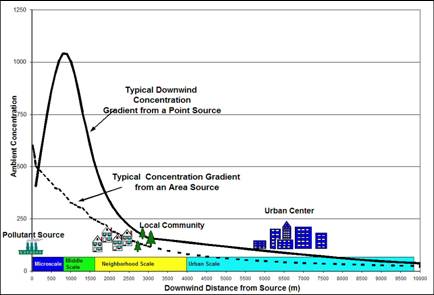June 2009
Front Matter
Training
32


Formation,
Destruction, Transport (1 of 2)
While
some pollutants can be neatly
characterized as contributors
to local, regional, or global
problems, many pollutants are important on multiple spatial scales.
Conceptual depiction of
transport scales.